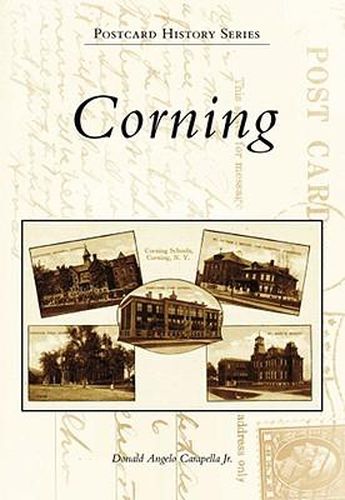Readings Newsletter
Become a Readings Member to make your shopping experience even easier.
Sign in or sign up for free!
You’re not far away from qualifying for FREE standard shipping within Australia
You’ve qualified for FREE standard shipping within Australia
The cart is loading…






In the 1830s, when a feeder branch of the Erie Canal linked up with the Cheumung River, Corning first became connected to the rest of the world. By the 1880s, Corning had become a railroad town with trains going in all directions. Industrial growth in the 1890s led to the rise of businesses and factories, such as Corning Glass Works. Because Corning produced so much glass, it became known as the crystal city and grew into a tourist destination. A town with many accomplishments, Corning was once home to a minor-league baseball team and is the birthplace of Margaret Sanger, a birth control activist who founded the American Birth Control League, which became Planned Parenthood. From the 1890s until the 1960s, the growth of the community’s businesses, parks, churches, and recreation were captured in postcards, many never published before.
$9.00 standard shipping within Australia
FREE standard shipping within Australia for orders over $100.00
Express & International shipping calculated at checkout
In the 1830s, when a feeder branch of the Erie Canal linked up with the Cheumung River, Corning first became connected to the rest of the world. By the 1880s, Corning had become a railroad town with trains going in all directions. Industrial growth in the 1890s led to the rise of businesses and factories, such as Corning Glass Works. Because Corning produced so much glass, it became known as the crystal city and grew into a tourist destination. A town with many accomplishments, Corning was once home to a minor-league baseball team and is the birthplace of Margaret Sanger, a birth control activist who founded the American Birth Control League, which became Planned Parenthood. From the 1890s until the 1960s, the growth of the community’s businesses, parks, churches, and recreation were captured in postcards, many never published before.